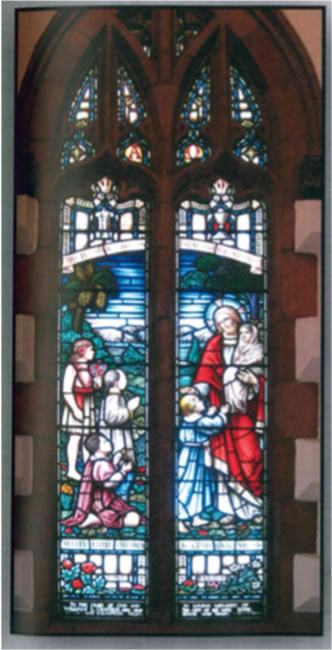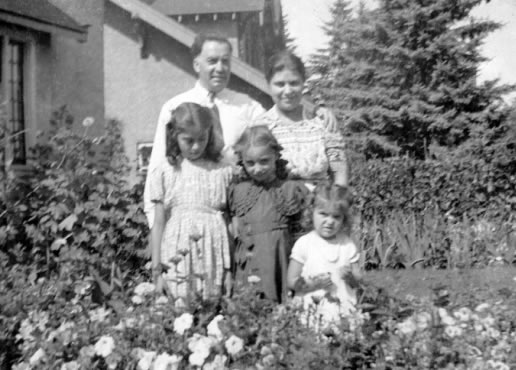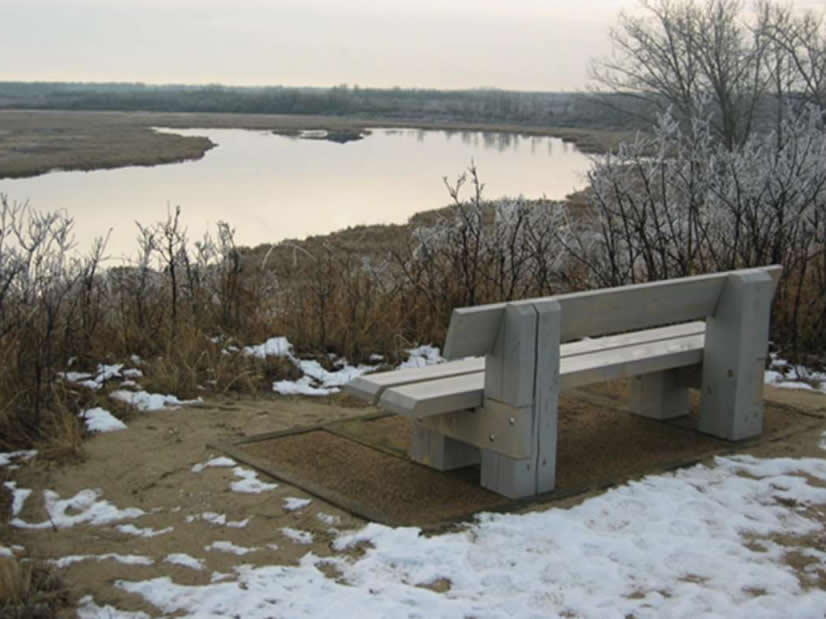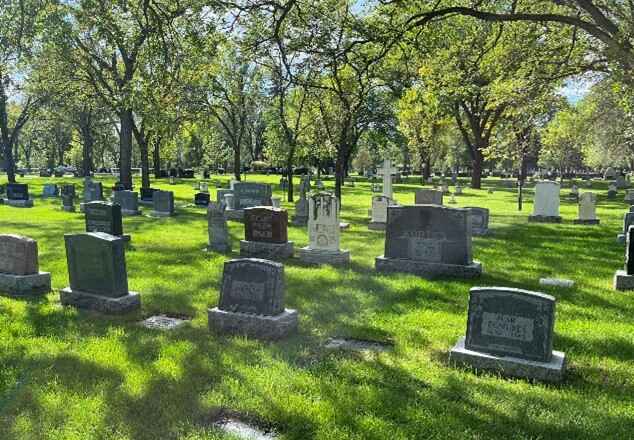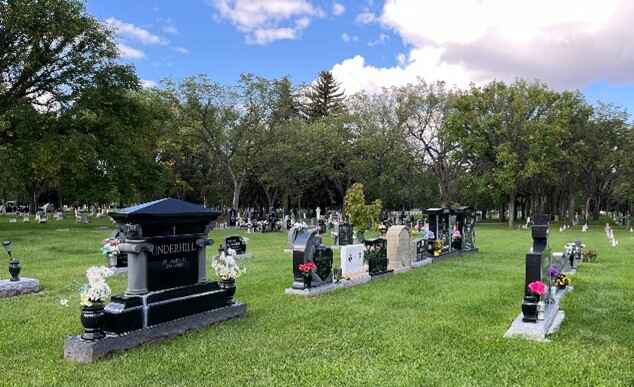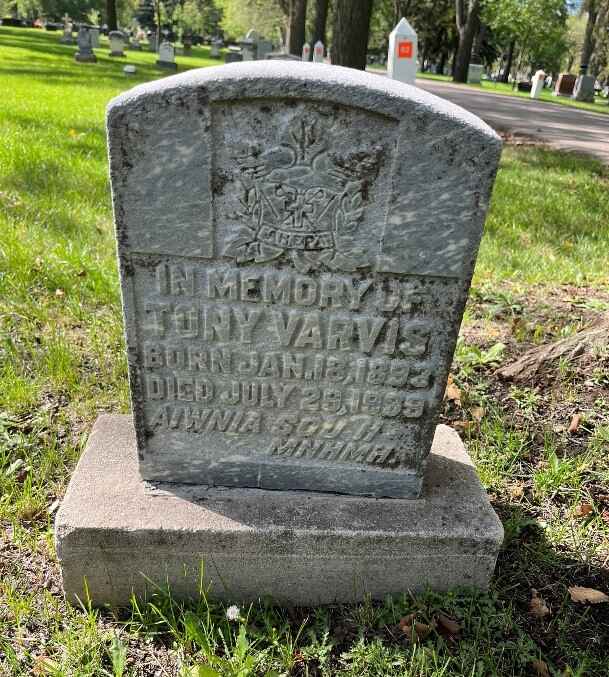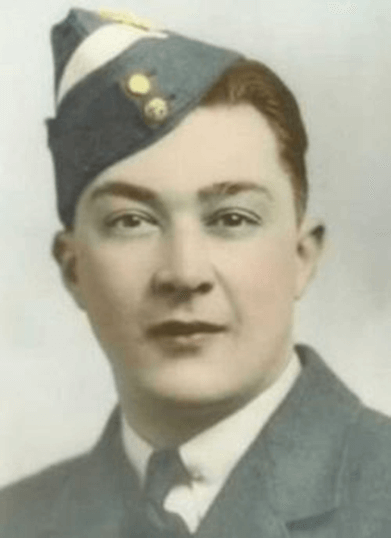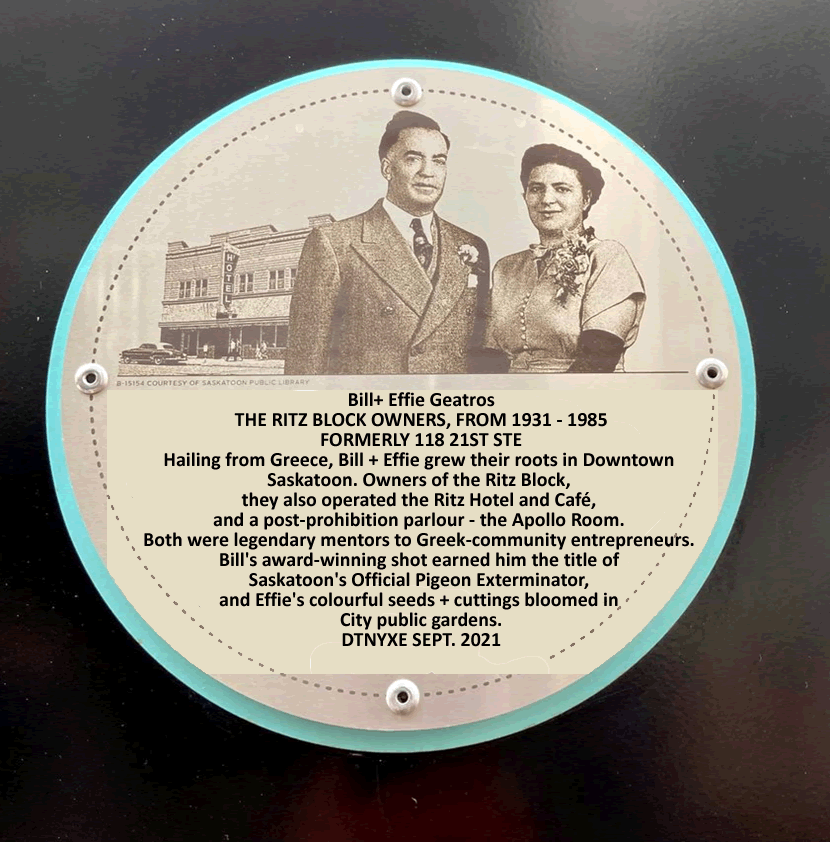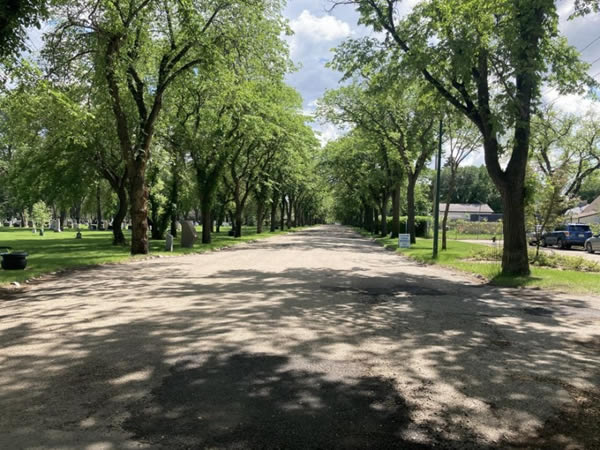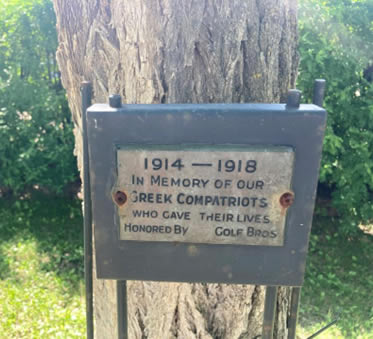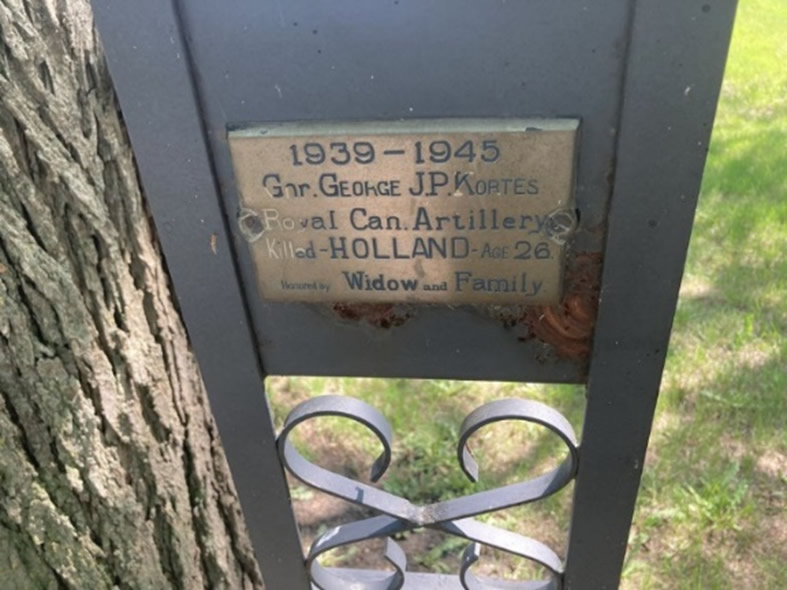Places
Saskatoon’s History Through the Lives and Experiences of its Greek Community:
This webpage identifies some of the places in Saskatoon and Saskatchewan which have been created by or named in recognition of people within the city’s Greek community.
The Cathedral Church of St. John the Evangelist
(“St. John’s Cathedral”), Saskatoon
Geatros Family, Saskatoon (ca. 1940s)
Source: Pontikes Family Photographs Collection
In memory of William L. Geatros (former owner of the Ritz Hotel) who died in 1949, his wife Eftyhia (Effie) and his daughters Helen, Diane, and Mary donated the stained-glass window at the west end and behind the baptismal font of St. John’s Cathedral in Saskatoon. The window is titled, “Christ Blessing the Children”. The donation was made in 1959.
Peter and Lola Pontikes Conservation Easement
Brown’s Lake, Rural Municipality of Corman Park
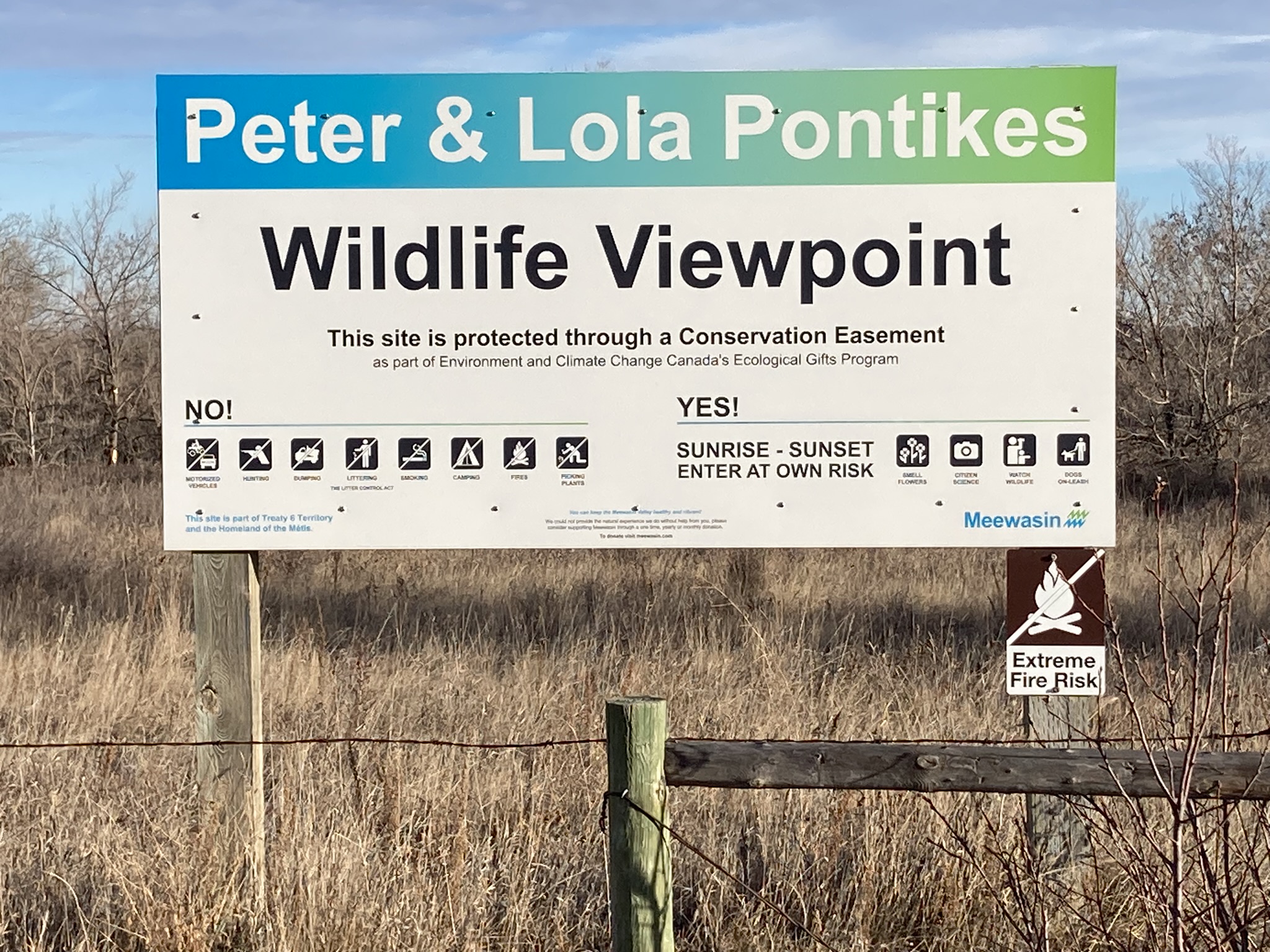
Photo Source: Pontikes Family
The Peter and Lola Conservation Easement was designated as a conservation easement in 2006 by the Meewasin Valley Authority; it involves 17.15 acres of ecologically sensitive property owned by the Pontikes Family. The property is located east of Highway 60 (“Pike Lake highway”), approximately 2.2 kilometers south of Saskatoon. It is south of St. Volodymyr Ukrainian Park and is adjacent to and includes a portion of Brown’s Lake. The property is primarily covered by riparian forest, natural grasslands, and four acres of wetlands. The wetlands serve as a migratory bird staging area and are home to other wildlife.
The property has been owned by the Pontikes family since the 1950s. The property has been identified as a memorial to Peter and Lola Pontikes. Peter died in 2000 and Lola died in 2014. The conservation easement ensures that the ecological features of the property will be protected in perpetuity. The property is accessible to the public but contains no major park infrastructure, other than identifying signage, a bench constructed by Meewasin, and an occasionally mowed path to the bench. The Saskatoon Nature Society has recognized this conservation easement as one of the 36 notable viewing sites in and around Saskatoon.
Greek Section
Woodlawn Cemetery
Second Avenue North, Saskatoon
The City of Saskatoon has designated an area within Woodlawn Cemetery for the interment and memorialization of people associated with Saskatoon’s Greek Community. This designated “Greek Section” is located to the west of the Cemetery’s current administrative building.
Prior to the establishment of the Greek Section, burials of deceased people associated with the Greek community occurred in available plots throughout the Cemetery. The first burial of a Saskatoon Greek was Andreen Anton in September of 1919. Andreen was killed in a duck-hunting accident. Subsequently, there were other burials of deceased Greeks in various locations within Woodlawn Cemetery.
In July 1939, Tony Varvis died and was buried in an open area in the Cemetery now identified as Block 69. Tony had been the head chef at the Elite Cafe and the owners of the restaurant, the Girgulis brothers, chose and paid for Tony’s grave site. The monument includes the logo of the Order of Ahepa; it is not known whether this logo honours Tony’s involvement in the Order and/or whether the local chapter contributed towards the cost of the monument.
There is no information available as to why this location for Tony’s grave was chosen and became the first within what would become known as the Greek Section. Nevertheless, subsequent deaths resulted in the remains of local Greeks being buried near the Varvis grave. Thomas D. Smith, who died in September 1939, was buried in the next row immediately to the west of Tony Varvis. George Matheos died in September 1940 and was buried in the same row next to Tony Varvis. John Gekas, who died in April 1941, was buried next to George Matheos and James Smith (Thomas D. Smith’s son), who died in July 1942, was buried next to John Gekas.
While not formally recognized in the City’s bylaws, the Greek Section was established through the support of the municipality’s administration which kept the space available for future burials of members of Saskatoon’s Greek families. Today, the Greek Section continues to be the preferred burial ground for the local Greek community. A stroll among the grave markers in this section of Woodlawn Cemetery provides a reminder of the people who established this community and honours their contributions to our city.
Researched and written by Ken Pontikes, September 26, 2024.
Hoidas Lake – Northern Saskatchewan
Hoidas Lake in northern Saskatchewan was named as a memorial to Irvin Frank Hoidas who was born in Winnipeg, but attended elementary and high school in Saskatoon and was enrolled in the aerial navigation program at the University of Saskatchewan. Irvin was the son of Frank Hoidas who was born in Tripoli, Greece.
Irvin enlisted in the Royal Canadian Air Force in October 1940 and was sent to Europe. He achieved the rank of pilot officer.
On May 22, 1942, Irvin’s parents were advised that their son was missing in active service as an observer on a night bombing raid over enemy territory in Belgium. His plane which had a crew of seven had not returned to its base. Enquiries about their fate were made through the International Red Cross Society. In November, confirmation was received that all crew members, of which three (including Frank) were Canadian, had been killed when the aircraft was hit by an incendiary bomb while in the air. The damage caused by the bomb resulted in the plane crashing to the ground.
Frank’s remains are buried at the Heverlee Commonwealth War Graves Commission Cemetery in Leuven, Belgium.
Researched by Ken Pontikes, July 23, 2023
Kordes Lake – Northern Saskatchewan
Kortes Lake in northern Saskatchewan was named as a memorial to George John Paul Kortes who born in Moose Jaw, but who moved to Saskatoon with his parents in 1933. He attended Nutana Collegiate in Saskatoon.
George enlisted with the Canadian Army in 1939 and was sent to Europe. He was a gunner with the Canadian Army. He died of injuries sustained in a motorcycle accident in Holland, while performing military duties on April 17, 1945. He is buried in Groesbeck Canadian War Cemetery in the Netherlands.
At the time of his death, George was survived by his parents, his wife (Mary Anna Kortes), and his daughter (Barbara Geil Kortes) who were living in Saskatoon.
Researched by Ken Pontikes, July 23, 2023
St. George’s Anglican Church
624 Avenue I South, Saskatoon
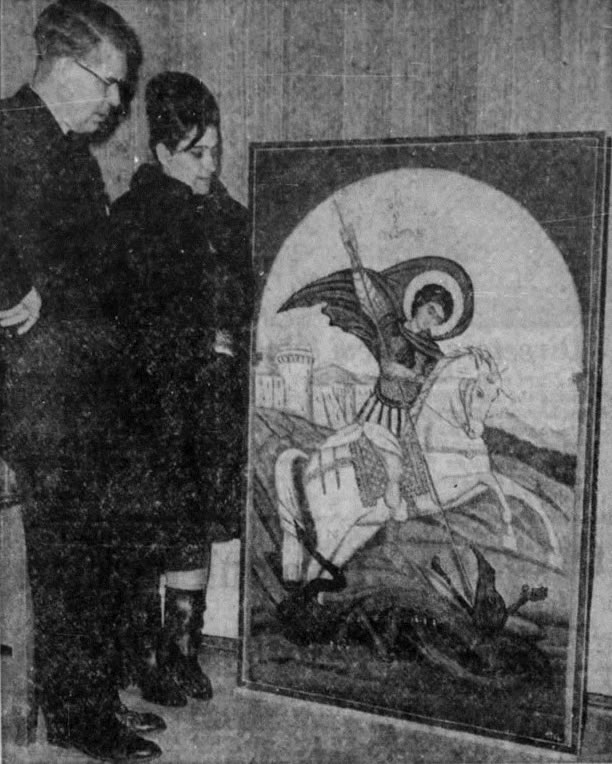
Mrs. Steve Stefanidis and Canon H. W. Brandrick view a painting of St. George and the dragon, presented by Mr. and Mrs. Stefanidis, for the recently completed sanctuary of St. George’s Anglican Church.
A belief in miracles by two grateful Saskatoon parents sparked the gift of an artwork to a Saskatoon church. Sunday, Bishop S. Steer conducted a dedication service at St. George’s Anglican Church, when a painting of the church’s patron saint was presented by Mr. and Mrs. Steve Stefanidis of 712 Ave. I South.
The couple had commissioned the work to be done at a Greek Orthodox church monastery in their native Greece. It was presented in appreciation of what Mrs. Stefanidis termed the miraculous recovery of her eldest son, Charlie, 14, from the effects of severe scalding from spilled hot coffee.
The painting of St. George and the dragon will be hung against a prepared background at the rear of the recently completed sanctuary.
The work has been called an excellent example of a modern adaptation of the Byzantine traditional style, common in the 13th century. At that time, it was customary for a senior craftsman in the monastery to sketch the design, do the main features such as head and hands, and delegate the balance of the work, under supervision, to others in the monastery.
Mrs. Stefanidis says she and her husband had watched the building of the new sanctuary and wished to help in some way which would show their gratitude for the recovery of their son. They decided a painting of the church’s patron saint would be a suitable and lasting tribute.
It is also a symbol of ecumenism at work, for the family are members of the Greek Orthodox Church but attend St. George’s when there is no service at their own church.
Saskatoon Star-Phoenix, December 19, 1966, p. 17.
Leakos Field
Gordon Howe Sports Complex, Saskatoon
In 1984, Saskatoon’s City Council approved renaming Fastball Field No. 2 in the Gordon Howe Sports Complex to Leakos Field. This recognized the contributions of Steve and Spero Leakos to the sports life of Saskatoon through their involvement in the Commodores baseball team and the Saskatoon Quakers hockey team.
In a profile of Spero Leakos, Greg Brons, Baseball Sask’s high performance director, spoke about Spero’s modesty in having the field named after him and his dad:
“He would never call it ‘Leakos Field’. He would always say, ‘Oh it’s over on that other field”.
“I’d say, ‘You mean Leakos Field?’
[And Spero would reply]: “Yeah, yeah, yeah, Whatever.”
“I always loved that about him. He was just a humble guy, you know?”
Spero was inducted in 1986 into the Saskatoon Sports Hall of Fame as a builder in the sport of baseball.
Researched by: Ken Pontikes, September 26, 2023
Sources: Saskatoon Star-Phoenix, April 11, 1984, p. 33; and March 10, 2020, p. B1.
Legends Downtown Saskatoon Project
Pocket Park: Twenty-first Street East between First and Second Avenues
Each September, Saskatoon’s Downtown Business Improvement District (DTN/YXE) Saskatoon unveils a plaque to honour people who contributed to the historic vibrancy of our city’s Downtown district and to an awareness of our civic pride. The plaques are installed on a wall located where the former Ritz Hotel and Café stood until 1987.
On September 24, 2021, a plaque was unveiled to remember and honour Bill (“Vasilis”) and Effie (“Eftyhia”) Geatros (“Iatridis”) as Saskatoon Downtown Legends.

Bill and Effie Geatros’ nephews and nieces who attended the unveiling of the Legends plaque — Ken Pontikes, George Foufas, Stella Spanos, JoAnne Chrones, and Zoë Pontikes
Next-of-Kin Memorial Avenue
Woodlawn Cemetery
Second Avenue North, Saskatoon
Next-of-Kin Memorial Avenue was established within Saskatoon’s Woodlawn Cemetery in 1922-23 by the military chapter of the Imperial Order Daughters of the Empire. Trees were dedicated along a “road of remembrance” which begins at the entrance and carries on through the Cemetery to the Soldiers Memorial. Plaques were installed next to each tree in memory of soldiers who died in several international conflicts, including the Boer War, First and Second World Wars, and Korean War. Each tree and plaque was financed by a friend or relative. Next-of-Kin Memorial Avenue in Saskatoon is a National Historic Site and as a road of remembrance, is the only such war memorial that still exists in Canada.
Two plaques are of relevance to Saskatoon’s Greek Community. The first is a tree and plaque (located adjacent to the Cemetery’s Greek Section) in memory of George J. P. Kortes who was killed in Holland, at the age of 26, during the Second World War. The second is a tree and plaque (located at the front entrance to the Cemetery) donated by the Golf Brothers (Gus and Bill) in memory of “our Greek Compatriots who gave their lives” in the First World War.
